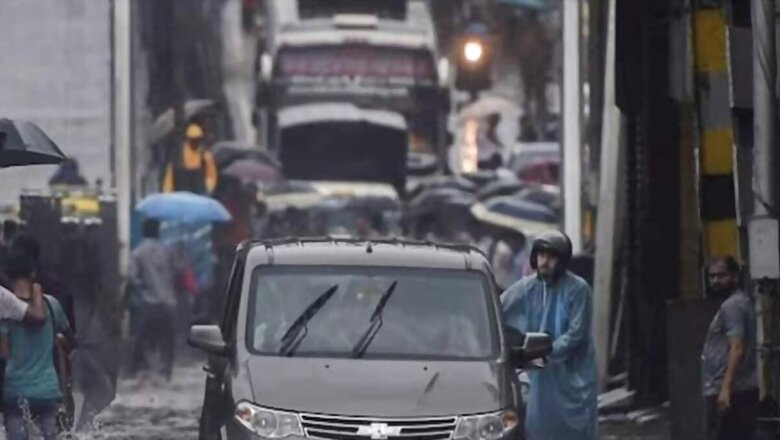
views
With the arrival of monsoons this year, the heavy downpours have taken the country by storm. This has led to road cave-ins, floods, and landslides causing massive damage to life and property. A majorly impacted asset is the motor vehicle and what follows is the concern for exorbitant repair cost. A bigger worry-factor for most residents is whether their motor insurance will cover the cost of repairing the flood-damaged vehicle.
To provide a holistic view around the usage of motor insurance during floods, this article will serve as a comprehensive guide on how to claim for damages caused by floods or natural calamities for their vehicles.
Also Read: Switching Made Easy: Expert Tips About Motor Insurance Portability
Is flood damage covered under motor insurance?
All motor vehicle insurance policies include coverage for flood damage. To ensure protection in the unfortunate event of a natural disaster such as flooding, it is essential to choose Comprehensive Insurance. This type of insurance provides the necessary coverage for damages caused by floods and other natural calamities. Although a comprehensive insurance plan does provide coverage for the expensive repairs of a flood-damaged vehicle, there are certain aspects it does not cover such as damages related to the engine or gearbox. To address these gaps in coverage, it is possible to supplement the comprehensive insurance plan with specific add-ons.
Also Read: Is Your Car Monsoon Ready? Know These Essential Insurance Add-On Covers
Best add-ons for Extra Protection
To enhance the coverage provided by the base plan, you have the option to include various add-on covers along with your Comprehensive Insurance. Add-ons offer supplementary coverage options to tailor and provide additional financial protection. Key add-ons to consider are –
Engine Protection Cover: The car engine is susceptible to damage due to non-usage or flood water ingression. While Comprehensive Insurance typically excludes engine damage due to impact, this add-on provides financial coverage for repairs or replacement of damaged engine parts due to water ingression.
No Claim Bonus (NCB) Protection Cover: Filing a claim during the policy period usually results in the loss of NCB benefits. However, the NCB Protection Cover preserves the NCB discount even if a claim is filed. This allows it to retain the discount of up to 50% (after five consecutive claim-free years) despite raising a claim.
Return to Invoice Cover: If the car sustains irreparable damage due to flooding or is stolen, the Return to Invoice Cover allows you to claim the purchase price or invoice value of the car. This includes the registration cost, road tax, and other applicable terms as per the policy.
Zero Depreciation Cover: Over time, car parts depreciate, resulting in a decrease in the car’s value. When filing a claim, insurers typically consider depreciation, which reduces the claim amount. However, with the Zero Depreciation Cover, depreciation is not factored in, allowing you to receive the total value of car repairs.
Consumables Cover: The base plan may not cover the cost of consumable items such as lubricants, engine oil, nuts, bolts, and grease. With the Consumables Cover add-on, you are protected against expenses related to these consumable items during accidents or natural calamities like floods.
Roadside Assistance Cover: This add-on provides 24×7 emergency roadside assistance, including towing services, in the event your car becomes stranded due to floods. Additionally, it offers benefits such as fuel refilling, minor repairs, flat tire services, and more.
Claim Initiation for Vehicle Damage
The claim process for car damage resulting from a flood is relatively simple. Since floods are typically widely covered by national news, policyholders can easily provide evidence of the damage. It is hence advisable to promptly contact the insurance company to report the damages and gather substantial evidence, such as photographs or videos showcasing the extent of the car’s damage.
Ensure that important documents, including the car’s Registration Certificate (RC), the owner-driver’s Driving License (DL), a soft copy of the Policy Document, and any relevant evidence-related documents, are readily available. Following the insurance company’s assessment of the car’s damages, the claim will be processed.
Twist in the Tale
Despite submitting all necessary documents to the insurer, there can be a situation where the claim might still get rejected in case the insurer identifies that the claim was consequential. Consequential damage refers to the damage that arises because of an action that may or may not be under one’s control. For instance, if a car is submerged underwater and an attempt is made to crank the engine, it can lead to a hydrostatic lock and subsequent damage. Consequently, such damage cannot be attributed solely to flooding. As a solution to mitigate this situation, it is pertinent to buy engine protect add-on to avoid the loss.
To sum it up, it is highly recommended that individuals who stay near flood prone areas must consider a motor insurance policy and enhance the coverage with the right add-ons.
-The author is chief underwriting officer at Acko. Views expressed are personal.



















Comments
0 comment